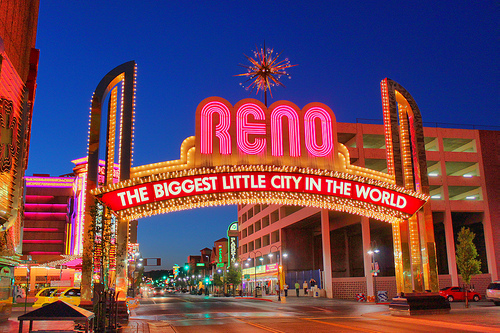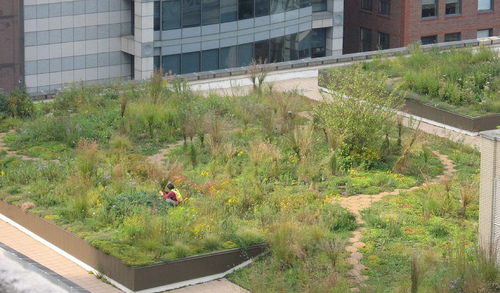 Chicago’s City Hall is one of the city’s most prominent green roofs.Photo courtesy of Center for Neighborhood Technology via FlickrSkyscrapers and other enormous buildings are environmental horror shows. Countless tons of steel, concrete, and glass are required to build them. Endless streams of energy keep them warm enough in winter and cool enough in summer. Lights and computers are kept on all night long. And just imagine the water that goes into flushing all those toilets.
Chicago’s City Hall is one of the city’s most prominent green roofs.Photo courtesy of Center for Neighborhood Technology via FlickrSkyscrapers and other enormous buildings are environmental horror shows. Countless tons of steel, concrete, and glass are required to build them. Endless streams of energy keep them warm enough in winter and cool enough in summer. Lights and computers are kept on all night long. And just imagine the water that goes into flushing all those toilets.
So you might think that Chicago — birthplace of the skyscraper and home to nine of the world’s 100 tallest buildings — is like a City of the Eco-Damned. Not so. Chicago has the highest number of LEED-certified buildings in the United States, the highest square footage of green rooftops, and a longstanding commitment to green building.
The Windy City counts 124 Leadership in Energy and Environmental Design buildings, including 32 municipal ones, scored by the U.S. Green Building Council for factors such as water conservation, use of energy-saving building systems, and proximity to public transportation. Four million square feet of green rooftops cool the city and help to absorb rain water.
Since 2004, all new Chicago municipal buildings have been constructed to meet LEED certification standards. City buildings that undergo renovation must meet the same requirements. And when it comes to the private sector, Chicago draws on a unique mix of carrots and sticks to encourage sustainable development.
The beginning
Chicago Mayor Richard M. Daley became an early proponent of sustainable building techniques when the city opened its Chicago Center for Green Technology in 2002. The structure, which houses a green building resource center and is open to the public for tours and workshops, was the first rehabbed municipal building in the country to earn the U.S. Green Building Council’s LEED platinum rating. Among the building’s environmentally friendly features are a geothermal heating system, a green roof, ceiling tiles made of recycled newspapers, and floors of recycled carpeting and cork.
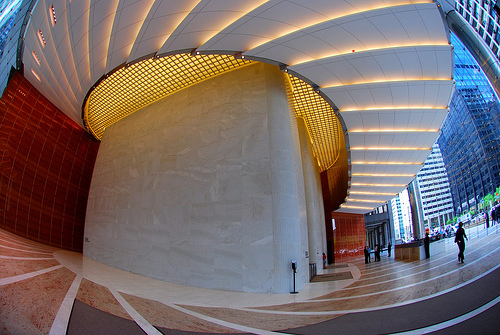 The 51-story office building at 111 South Wacker became Chicago’s first LEED-certified tower in 2005. The building has energy-efficient lighting, recycled materials, and paints and carpet made with minimal toxic components.Photo courtesy of clarkmaxwell via FlickrBuilding upon this success, city leaders in 2004 decreed that all new or rehabilitated city buildings would be LEED-certified, and began constructing police stations, libraries, and other public spaces to meet that standard. Leaders also adopted policies and programs encouraging the private sector to aspire to the same standard. “Mayor Daley wasn’t going to ask the private sector to do anything that the public sector wasn’t already doing,” says Michael Berkshire, green projects administrator with the city’s Department of Zoning and Land Use Planning.
The 51-story office building at 111 South Wacker became Chicago’s first LEED-certified tower in 2005. The building has energy-efficient lighting, recycled materials, and paints and carpet made with minimal toxic components.Photo courtesy of clarkmaxwell via FlickrBuilding upon this success, city leaders in 2004 decreed that all new or rehabilitated city buildings would be LEED-certified, and began constructing police stations, libraries, and other public spaces to meet that standard. Leaders also adopted policies and programs encouraging the private sector to aspire to the same standard. “Mayor Daley wasn’t going to ask the private sector to do anything that the public sector wasn’t already doing,” says Michael Berkshire, green projects administrator with the city’s Department of Zoning and Land Use Planning.
Chicago’s Sustainable Development Policy mandates that projects receiving financial or zoning assistance from the city include sustainable elements such as green roofs, LEED certification, or designs that allow structures to absorb large amounts of storm water. Its Green Permit Program allows contractors to shave time and money (as much as $25,000) off the building permit process by choosing to incorporate some of 12 sustainable design “menu items.”
Taken together, these measures have seen the city’s number of LEED-certified buildings and green roofs explode, causing leaders to proclaim it “one of the greenest cities in America.”
The dreamers
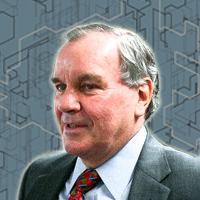 Mayor Richard M. Daley began beautifying Chicago streets with flowers and plants during the 1980s and ’90s, but soon turned his attention to a deeper problem: the environmental impact of city buildings. “The mayor has made all the difference in the city of Chicago,” says John Albrecht, a former architect for the city who is now director of sustainability for the Chicago firm NELSON. “He embraced sustainable building early on.” Daley, whose commitment to other issues like recycling and traffic congestion has been questioned, nonetheless embraced green building and followed through with policies and programs to encourage those who build in Chicago to do the same.
Mayor Richard M. Daley began beautifying Chicago streets with flowers and plants during the 1980s and ’90s, but soon turned his attention to a deeper problem: the environmental impact of city buildings. “The mayor has made all the difference in the city of Chicago,” says John Albrecht, a former architect for the city who is now director of sustainability for the Chicago firm NELSON. “He embraced sustainable building early on.” Daley, whose commitment to other issues like recycling and traffic congestion has been questioned, nonetheless embraced green building and followed through with policies and programs to encourage those who build in Chicago to do the same.
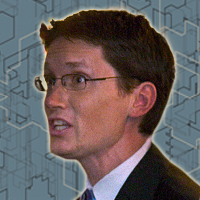 Talk to practically anyone about sustainable building in Chicago and Sadhu Johnston is a name heard over and over again. Johnston, the city’s chief environmental officer from 2003 to 2009, took the reins at a critical time, working cooperatively with other departments to seamlessly integrate the city’s various environmental initiatives. Though he has since moved to a position with the city of Vancouver, B.C., Chicagoans remember his contribution. Early on, city departments were reluctant to spend more time and money for the sake of the environment. But Johnston found a way to turn it into a competition and before long, every department in the city wanted to be the greenest.
Talk to practically anyone about sustainable building in Chicago and Sadhu Johnston is a name heard over and over again. Johnston, the city’s chief environmental officer from 2003 to 2009, took the reins at a critical time, working cooperatively with other departments to seamlessly integrate the city’s various environmental initiatives. Though he has since moved to a position with the city of Vancouver, B.C., Chicagoans remember his contribution. Early on, city departments were reluctant to spend more time and money for the sake of the environment. But Johnston found a way to turn it into a competition and before long, every department in the city wanted to be the greenest.
 John Albrecht , one of the founders of the U.S. Green Building Council’s Illinois chapter, found himself in the middle of the city’s green building debate when he worked as an architect for Chicago’s Department of General Services in the early 2000s (he left for the private sector in 2007). Back then, adopting sustainable building practices seemed expensive, and perhaps unnecessary, to some. But when his bosses asked for a volunteer to become the city’s first LEED-certified architect, Albrecht took a gamble and raised his hand, designing a LEED-certified police station for the city’s District 22. Today, while LEED-certified architects abound, he remains one of the most enthusiastic. “I just believed in it and I still do,” he says.
John Albrecht , one of the founders of the U.S. Green Building Council’s Illinois chapter, found himself in the middle of the city’s green building debate when he worked as an architect for Chicago’s Department of General Services in the early 2000s (he left for the private sector in 2007). Back then, adopting sustainable building practices seemed expensive, and perhaps unnecessary, to some. But when his bosses asked for a volunteer to become the city’s first LEED-certified architect, Albrecht took a gamble and raised his hand, designing a LEED-certified police station for the city’s District 22. Today, while LEED-certified architects abound, he remains one of the most enthusiastic. “I just believed in it and I still do,” he says.
The money
A $100 million settlement with energy provider ComEd over power reliability issues in the late 1990s provided money to begin sustainable development in the city, including $14.4 million to finance the Chicago Center for Green Technology and $2.5 million to create a 38,800-square-foot green roof on top of City Hall. The settlement helped pay for clean-up of the Chicago Center for Green Technology site, formerly occupied by Sacramento Crushing, a construction and demolition debris recycling company that the city closed in 1996 for violation of environmental laws. That first project launched everything else — from municipal projects to privately owned buildings.
The outcome
While higher building costs were associated with constructing
the city’s first LEED-certified buildings, prices have gone down as architects and contractors become more familiar with the practices and materials used in sustainable building, says the U.S. Green Building Council, Illinois chapter’s Associate Director Katie Kaluzny. “Hundreds of people have gone through our workshops,” she says, adding that it’s now difficult to find a Chicago architectural firm that doesn’t have LEED expertise.
This explosion of knowledge means the city can now build a LEED building for almost the same cost as a non-LEED version, Berkshire says, and that doesn’t factor in future energy savings.
The copycats
When Chicago began its emphasis on green building a decade ago, it was novel. Today, cities such as Indianapolis and Grand Rapids, Mich. have launched their own sustainable building initiatives. “It’s a pretty simple program that could be applicable just about anywhere,” says Berkshire, who shares what he’s learned at speaking engagements and meetings all over the world.
Albrecht recalls that when Mayor Daley made plans for the Chicago Center for Green Technology a decade ago, the city lagged behind the East and West coasts in its use of green building techniques. Ten years later, cities such as Portland; Seattle; Washington, D.C.; and Atlanta are nipping at Chicago’s heels for the right to call themselves the LEED leader.
“The progress that we’ve experienced in the green building movement didn’t happen overnight and it will take a sustained effort by both the public and private sector to maintain and expand moving forward,” says Chicago Environment Commissioner Suzanne Malec-McKenna.
